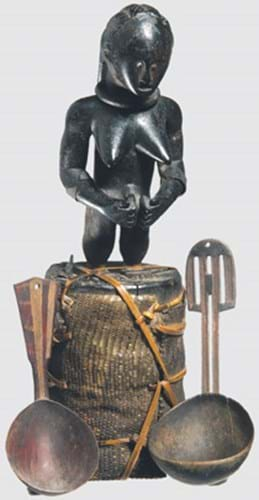
The piece in question was this 12in (31cm) high wooden female fetish figure from the Fang people of Gabon. The carved wooden figure with glass eyes and iron bracelets stood on a round box covered in reptile skin and filled with magic ancestral relics.
Auctioneer Wolfgang Hermann started with the humble reserve of €800, but it immediately became clear that there were collectors and dealers from all over the world in the room and on the phones, who presumably had all hoped that they alone had made a great discovery. Once they realised that this was not the case, they wasted no time on preliminaries.
The very next bid was €23,000, followed by €100,000. That was just the beginning of the story.
In next to no time the hammer fell at an astonishing €520,000 (£353,740) with a Swiss private collector putting paid to the hopes of several other international dealers and collectors. That is certainly the highest price ever paid at auction for a piece of African sculpture in Germany and, according to Ernst-Ludwig Wagner, co-owner of the auction house, it appears to be one of the highest auction prices for a Fang sculpture anywhere in the world.
Fang figures of this quality very rarely come up for sale and this one was not only in untouched condition, but importantly also had the attraction of a provenance that was traceable back to 1900, when it had belonged to a Lieutenant Zwickwolf, a German colonial administrator in German South-West Africa.
The sale's second highest price was for a collection of over 100 unpublished documents relating to the Greek War of Independence (1823-1829). Offered with a reserve of €20,000, the manuscripts attracted international interest and sold to an unnamed private collector for €105,000, who outbid a representative of the Greek government.
The buyer's premium was 23 per cent.
By Jonathan Franks




